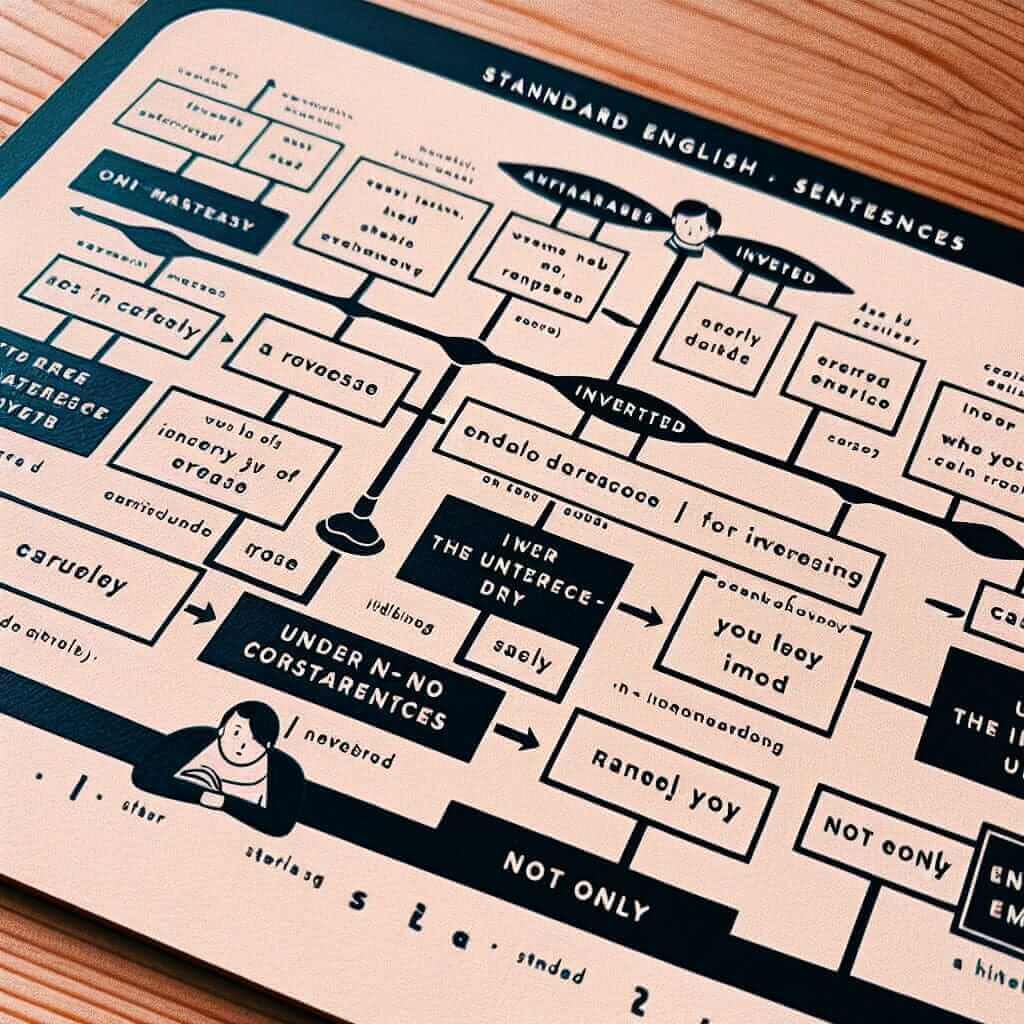In the realm of the English language, and especially in the meticulous world of IELTS, precision and sophistication are paramount. One grammatical structure that often trips up even advanced learners is inversion. While it might sound complex, mastering inversion can significantly enhance your writing and speaking scores, pushing you closer to that coveted band 7 or 8.
Imagine yourself confidently using phrases like “Under no circumstances should you…” or “Not only did he…” in your IELTS Speaking test, leaving the examiner thoroughly impressed. This is the power of inversion.
Let’s break down this impactful grammatical tool.
Understanding Inversion
Inversion, simply put, is reversing the typical subject-verb order in a sentence. Instead of saying “He is happy,” we might say, “Happy is he.” Sounds poetic, right? While this direct inversion is less common in everyday speech, a subtler form is frequently used, especially in formal writing and to emphasize a point.
Consider these examples:
-
Standard: You should not reveal this secret under any circumstances.
-
Inverted: Under no circumstances should you reveal this secret.
-
Standard: She rarely travels alone.
-
Inverted: Rarely does she travel alone.
Notice how the inverted sentences carry more weight and sound more sophisticated? That’s the magic of inversion!
The Mechanics of Inversion
When to Invert
Inversion is primarily used:
- After negative adverbials: This includes phrases like “under no circumstances,” “never before,” “hardly ever,” “scarcely,” “no sooner…than,” etc.
- With “only” expressions: Such as “only after,” “only when,” “only if,” etc.
- In conditional sentences (to replace “if”): For instance, “Were I to tell you…” instead of “If I were to tell you…”
The Formula
While the rules of inversion can seem intricate, there’s a simple formula to follow:
Negative Adverbial/ “Only” Expression/ Condition Phrase + Auxiliary Verb + Subject + Main Verb
For example:
- Never before had I seen such beauty. (“Never before” + “had” + “I” + “seen”)

Inversion in Different IELTS Sections
- Writing Task 2: Inversion adds a layer of formality and sophistication to your essays, demonstrating a strong command of grammatical structures. For instance:
- Standard: The government should not ignore this problem.
- Inverted: Under no circumstances should the government ignore this problem.
- Speaking Part 2 & 3: Using inversion, even sparingly, can make your spoken English more engaging and impressive. Imagine describing a memorable experience:
- Standard: I had never felt so happy in my life.
- Inverted: Never before had I felt such happiness.
Common Pitfalls and How to Avoid Them
- Overusing inversion: Like any powerful tool, inversion is best used strategically. Overusing it can make your writing sound unnatural and forced.
- Incorrect auxiliary verb: Always ensure you’re using the correct auxiliary verb that agrees with the tense and subject of your sentence.
Mastering Inversion for IELTS Success
In conclusion, mastering inversion is a surefire way to elevate your IELTS performance. It demonstrates a sophisticated grasp of grammar, enhances the impact of your writing and speaking, and can help you achieve those higher band scores. Remember to practice using inversion in various contexts, refer to the formula when in doubt, and avoid overusing it. With consistent effort, you’ll be wielding this powerful grammatical tool with confidence and flair.